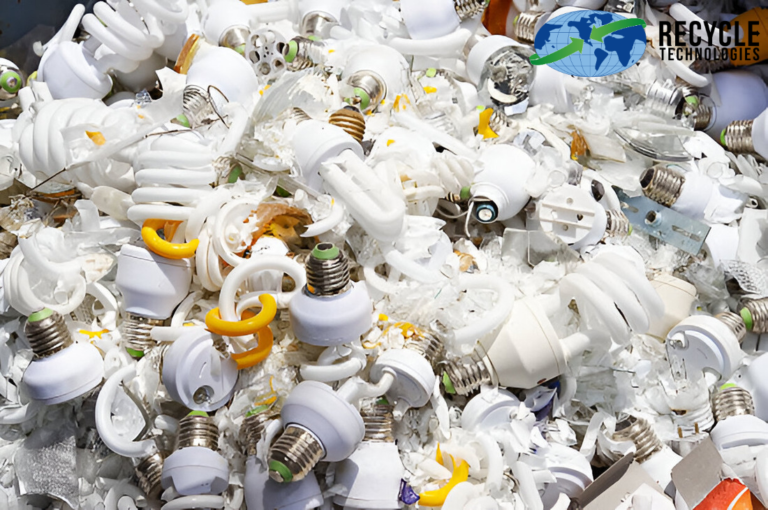Understanding Non-PCB Ballasts
What Are Non-PCB Ballasts?
Non-PCB ballasts are essential components in older lighting systems, regulating electrical current to fluorescent and HID lamps. Unlike PCB (polychlorinated biphenyl) ballasts, which are harmful and banned in many countries, non-PCB ballasts are considered safer and environmentally friendly. These ballasts are typically labeled “No PCBs,” making them easier to identify for proper handling and recycling.
How to Identify Non-PCB Ballasts
Manufacturers began clearly labeling ballasts as “No PCBs” after PCB-containing products were banned in the late 1970s. If a ballast is unmarked or lacks clear documentation, it’s safest to treat it as if it contains PCBs. For non-PCB ballasts, ensure that labels are intact and visible, as this information is critical for recycling facilities.
Importance of Recycling Non-PCB Ballasts
Environmental Benefits
Recycling non-PCB ballasts contributes to waste reduction and resource conservation. Although these ballasts lack PCBs, they contain materials like metals and plastics that can be repurposed, reducing the need for new raw materials and mitigating environmental harm.
Regulatory Compliance
Proper recycling ensures compliance with environmental regulations, such as the Resource Conservation and Recovery Act (RCRA). These laws mandate the responsible disposal of electronic waste, including ballasts, to prevent environmental degradation.
Proper Handling of Non-PCB Ballasts
Precautions During Removal
When removing non-PCB ballasts, always prioritize safety. Wear gloves and protective eyewear to avoid exposure to debris or residual materials. Work in a ventilated area to minimize inhalation risks, especially when dealing with aged or damaged components.
Tools and Equipment Needed
To safely remove and prepare ballasts for recycling, you’ll need basic tools like screwdrivers, pliers, wire cutters, and protective containers. Ensure containers are labeled to distinguish non-PCB ballasts from potentially hazardous materials.
Disposal Methods for Non-PCB Ballasts
Approved Recycling Facilities
Certified recycling facilities are the best option for disposing of non-PCB ballasts. These facilities are equipped to safely process and repurpose materials, adhering to strict environmental standards.
State and Local Disposal Guidelines
Disposal regulations vary by location. Some states offer recycling programs or require businesses to use licensed disposal companies. Check with local environmental agencies to ensure compliance with regional rules.
Challenges in Non-PCB Ballast Recycling
Common Issues Faced by Businesses
Businesses often encounter logistical challenges, such as locating certified recycling centers or dealing with limited resources for waste management. These obstacles can lead to improper disposal, risking penalties.
Overcoming Barriers
To address these challenges, businesses can partner with specialized waste management firms or invest in employee training programs focused on recycling practices. Clear internal protocols ensure compliance and efficiency.
Tips for Efficient Non-PCB Ballast Recycling
Partnering With Certified Recyclers
Collaborate with certified recyclers who offer comprehensive services, including transportation, documentation, and compliance support. These partnerships simplify the recycling process and guarantee environmental standards are met.
Maintaining Documentation
Keep detailed records of recycling activities. Documentation, such as receipts and manifests, is essential for regulatory audits and demonstrates your commitment to responsible waste management.
Legal and Safety Considerations
Compliance With Environmental Laws
Environmental laws like the EPA’s Universal Waste Rule regulate the handling and disposal of ballasts. Familiarizing yourself with these laws ensures that your organization operates within legal boundaries.
Avoiding Penalties and Fines
Improper disposal of non-PCB ballasts can result in substantial fines. Establishing clear recycling procedures and educating employees on proper disposal methods minimizes this risk.
Innovative Recycling Trends in Non-PCB Ballasts
Emerging Technologies
Advanced technologies, such as automated sorting systems, have revolutionized ballast recycling. These innovations improve material recovery rates, reducing waste and enhancing sustainability.
Circular Economy Strategies
Incorporating circular economy principles—where materials are reused or refurbished—extends the lifecycle of ballast components. This approach supports global sustainability goals and reduces the demand for new resources.
Frequently Asked Questions
What are the differences between PCB and Non-PCB Ballasts?
PCB ballasts contain harmful chemicals, while non-PCB ballasts do not. Non-PCB ballasts are safer for the environment and easier to recycle.
Can I recycle Non-PCB ballasts at home?
Home recycling is not recommended. Certified facilities have the equipment and expertise to handle these materials safely and in compliance with regulations.
Are there penalties for improper disposal?
Yes, failing to dispose of ballasts properly can result in legal penalties and fines. Businesses must adhere to state and federal guidelines.
How do I find a certified recycling facility?
Search online or contact local environmental agencies for a list of certified facilities in your area. Many organizations provide pick-up or drop-off services.
What records should I keep during recycling?
Maintain receipts, manifests, and compliance forms to document your recycling activities. These records protect your business during audits.
What are the risks of mishandling Non-PCB ballasts?
Improper handling can lead to environmental contamination or workplace injuries. Always follow safety protocols and use appropriate tools during removal.
Conclusion: The Future of Non-PCB Ballast Recycling
Non-PCB ballast recycling is a critical component of sustainable waste management. By adopting safe practices, partnering with certified recyclers, and embracing emerging technologies, businesses can play a pivotal role in protecting the environment and conserving resources. With continuous innovations, the future of recycling is bright and promising.

